Planning & Prep
How To Cook Chicken Breast Perfectly in Under 30 Minutes

A tender, juicy piece of chicken is hard to top when it comes to memorable parts of a meal. Pasta is delicious, salads are indispensable — but when you get chicken right, it’s really, really right. (Remember the best chicken wings you’ve ever had? Exactly — you do remember them.)
Unfortunately, when it comes to cooking chicken, it’s also easy to mess up. We’ve all had sad, dry chicken at least once. But the good news is that it doesn’t have to be that way! There’s a secret to cooking chicken in every way — from the oven to the pressure cooker.
Below, we’ll cover how to cook chicken perfectly, no matter where or how you’re cooking it.
Table of contents
- What to know before you cook
- How to cook chicken breast
- FAQ
What to know before you cook
Before we dive too deep into the intricacies of chicken-mancy, let’s cover a couple of housekeeping items. You’ll want to determine these things before you start cooking, as they can substantially change variables like cooking time.
- Meat thickness: Thicker cuts of meat will require longer to cook since it takes longer for heat to reach the center. If you notice your chicken breasts are larger than usual, opt for the higher cooking time in the suggested range.
- Bone-in vs. boneless: Similarly, if you’re cooking chicken that still has the bones included, this will increase the cooking time as well — usually by about 10-15 minutes, depending on the temperature of the oven. It’s always best to use a thermometer to ensure your chicken is cooked all the way through, especially if you’re cooking with bones.
- Fresh vs. frozen: Forgot about date night until the last second? You’re not out of luck! If your meat is still frozen, you just need to add at least an additional 10-15 minutes to the cooking time, maybe more, depending on the size of your chicken breasts. Ideally, meat should be defrosted before cooking.
Now that we’ve covered some common variables, let’s get down to the serious business of cooking chicken.
| Chicken Breast Cook Times | |
| Oven | 15-20 minutes |
| Stovetop | 10-15 minutes |
| Grill | 5-7 minutes |
| Pressure cooker | 6-8 minutes |
In the oven

Step 1: Preparation
When it comes to prepping chicken for the oven, you have some options. Here are three of the simplest and easiest ways to prep chicken with low effort and delicious rewards:
- Brine: To brine chicken, soak it in lukewarm salted water for 15 minutes or more before adding further spices and seasonings.
- Dry rub: To dry rub chicken, simply select your seasonings and rub them onto the chicken before adding the meat to the pan.
- Marinade: To marinate chicken, select your sauces and spices and let the meat soak in the mixture for two to 24 hours.
Step 2: Baking
You can bake chicken at several temperatures, but cooking time will vary accordingly. The most popular temperatures are 350°F and 400°F (or anywhere in between).
- 350°F: Cook for 20-25 minutes, depending on the cut and weight of the meat. For boneless and skinless chicken, 20-25 minutes is a good place to start.
- 400°F: Cook for 15-20 minutes, depending on the cut and weight of the meat. For boneless and skinless chicken, start at 15 minutes and check the internal temperature to see how much longer it needs.
Step 3: Check for doneness
Once your timer beeps, it’s time for every chef’s best friend: the meat thermometer! Follow the cooking time calculator to get the best estimate on cook time, to start with, but always follow up with a temperature check.
- Temperature check: Check to make sure your chicken breasts are cooked all the way through. All chicken should be cooked to at least 165°F, measured at the thickest part of the meat.
- Cook until done: If your meat isn’t up to temp, put the pan back in the oven in two-minute increments until you can test it with the thermometer and get the appropriate temperature.
Recipe ideas:
- Easy and Flavorful Pesto Chicken
- Scrumptious Baked Chicken Parmesan
- Mediterranean Chicken Recipe with Kalamata Olives
On the stovetop

Step 1: Preparation
We suggest a marinade when cooking on the stove since more moisture will escape from an uncovered dish.
- Marinade: To marinate chicken, combine sauces and spices in a covered dish or bag and soak the meat in that mixture for two to 24 hours. Many people like to marinate chicken overnight.
Step 2: Sauteing
And now, it’s time for the fun part! Don your chef’s hat and fire up the stovetop; it’s time to saute.
- Grease the skillet: Use butter or olive oil to grease the bottom of the skillet (and provide a tasty base for your cooked chicken).
- Cook the first side: Cook the first side of the chicken breasts for four to five minutes or until the side touching the skillet is golden brown.
- Cook the second side: Flip the chicken after four to five minutes to cook the other side. Let this side cook until the internal temperature reaches 165°F.
Step 3: Check for doneness
Does your chicken look done on the outside? Don’t take it off the heat just yet. It’s not over until the thermometer says it’s over!
- Temperature check: Insert the meat thermometer at the thickest part of the meat to check temps. All chicken should be cooked to at least 165°F.
- Check the inside: If you don’t have a thermometer, you can cut the largest piece of chicken in half to make sure the inside is no longer pink. This also shows the chicken is done.
- Cook until done: Keep the chicken on the skillet until temperature readings hit 165°F, checking regularly.
Recipe ideas:
On the grill

Step 1: Preparation
Grilling allows for a lot of extra flavor — but there are a couple of extra important prep steps.
- Preheat the grill: Preheating means that when you put your meat on the grill, it starts at 400°F, searing the sides and locking in juices and flavor.
- Season the grill: If you’re feeling fancy, you can also pre-season the grill by rubbing herbs and spices directly on the grill, adding to the flavor.
Step 2: Grilling Times
Cook times on a grill can vary widely depending on where your meat is sitting on the grill. Take note, and adjust accordingly!
- Direct heat: When your chicken is directly over the flame, it will cook quickly but may burn easily. This is best for smaller pieces of meat and can cook as quickly as five to seven minutes per side.
- Indirect heat: When your chicken is placed to the side of the flame, it can take longer to cook but is less likely to burn. This is best for larger pieces of meat and bone-in chicken. Time varies, but depending on heat and the size of the meat, chicken on indirect heat can cook in 20-30 minutes.
Step 3: Check for doneness
- Use a meat thermometer: Always check grilled meat with a thermometer, as heat can be unevenly distributed, and it’s easy to miss uncooked meat. All chicken should be cooked to at least 165°F.
Recipe ideas:
- Chicken Inasal (Filipino Barbecue Chicken)
- Hawaiian Huli Huli Chicken + Pineapple Salsa
- Skewered Chicken Satay Recipe with Peanut Sauce
Grab it now on Instacart:
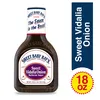
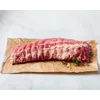


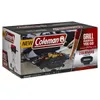
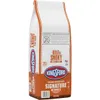
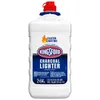

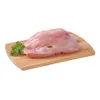

In a pressure cooker

Step 1: Preparation
According to many kitchen cooks, life is just better with a pressure cooker.
- Put everything in: Combine all sauces, seasonings, herbs and spices in the pressure cooker.
- Add lots of liquid: Your pressure cooker is steam-powered, so make sure to add enough liquid for the amount of meat you’ve added. Making sure the meat is covered is a good estimate.
Step 2: Pressure cooker instructions
- Fresh chicken: Cook fresh chicken breasts on high pressure for six to eight minutes or use the poultry button.
- Frozen chicken: Cook frozen chicken breasts on high pressure for 10-12 minutes.
- Releasing pressure: Use the natural pressure release method when cooking chicken. Don’t flip the quick-release valve; instead, let the pressure cooker depressurize on its own. This will keep the moisture inside longer and allow your meat to rest naturally.
Step 3: Check for doneness
- Check doneness: Chicken cooked in a pressure cooker is almost always cooked evenly, but it doesn’t hurt to be thorough. Check doneness with a meat thermometer (internal temperature should be 165°F) or by cutting the largest piece of meat to ensure the inside is not pink.
Recipe ideas:
FAQ
Still have chicken questions? Check out these answers straight from the Instacart kitchen.
For the juiciest, most tender chicken, keep these poultry secrets in mind:
Rest your chicken. After cooking, let the chicken sit, covered, in the container you used to cook it for five to 10 minutes. This will help the meat absorb juices and keep it soft and tender.
Cut carefully after resting. After resting, cut the chicken into larger pieces so it retains more moisture in each piece. You can even do this with shredded chicken — just tear the pieces larger than usual.
Store with broth. When refrigerating leftovers, save some broth or juice from the pan, skillet or pot to store with the meat. Letting the meat soak will keep it tender even after reheating.
All poultry should be cooked to a minimum internal temperature of 165 °F. Use a meat thermometer to check the temperature of the chicken in multiple places to ensure it is cooked all the way through — especially for thicker or larger chicken breasts. The temperature of the meat is more important than the listed cooking time!
Looking for some good marinades to start your chicken dish off right? Check out some of our favorite marinades to get started:
Citrus Herb Chicken Breast
Grilled Chicken Marinade
Chicken Injection Marinade
Grab it now on Instacart:
Winging it? We’ve got you covered!
Now that you know how to cook the juiciest chicken breast you (or your guests) have tasted, it’s time to get back in the kitchen and make it happen. Whether you’re hosting or meal prepping, these recipes are sure to wow. Remember to use a meat thermometer, and always marinate when you can. Bon appétit!
Pantry looking a little slim? Shop for ingredients for your next chicken dish on Instacart.
Most Recent in Planning & Prep

Planning & Prep
37 Care Package Ideas: From “Get Well” to “Just Because”
It’s always nice to show some extra appreciation for your loved ones. Whether you want to support a sick friend or a neighbor who had their first child, a care package is the perfect way…
Jan 30, 2025
Planning & Prep
Average Grocery Cost per Month: The 2025 Breakdown
The average grocery cost per month, per person, in the United States is roughly $350 for adults between 19 and 50 years old in a four-person household. This estimation depends on multiple factors, such as…
Dec 23, 2024
Planning & Prep
33 Shocking Global and National Food Waste Statistics (2025)
Did you know nearly 30% of the food produced globally is never eaten? This staggering food waste statistic highlights the alarming issue of uneaten food — a problem with environmental, economic and social consequences. Food…
Dec 23, 2024










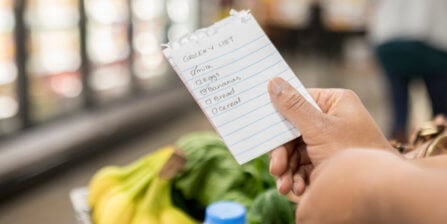 17 Grocery List Categories to Make Shopping Easy
17 Grocery List Categories to Make Shopping Easy 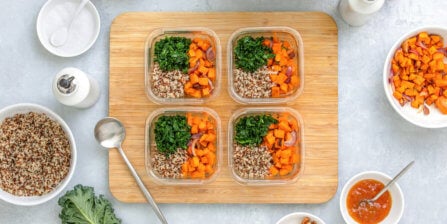 How to Meal Plan: Step-by-Step Guide to Meal Planning
How to Meal Plan: Step-by-Step Guide to Meal Planning 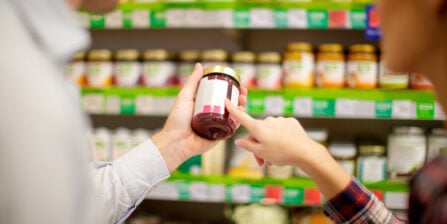 How To Read Food Labels: Guide to Nutrition Labels
How To Read Food Labels: Guide to Nutrition Labels 

